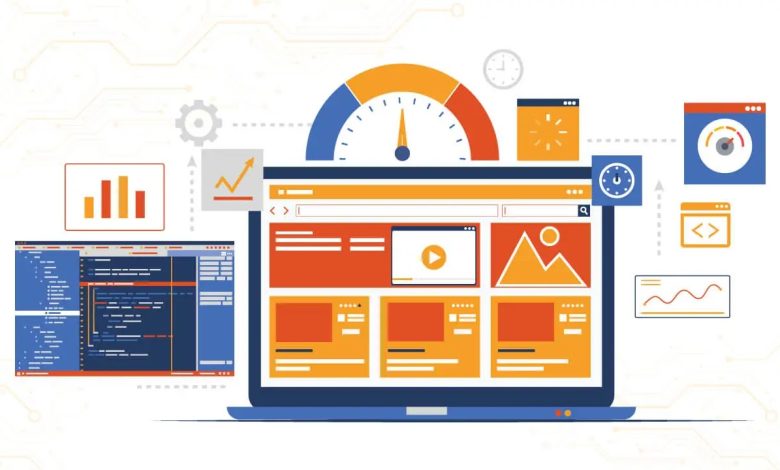Best Practices for Building High-Performance Web Applications in 2025

In today’s fast-paced digital world, web performance is no longer optional—it’s critical. Users expect websites and applications to load instantly and respond seamlessly. Studies show that even a one-second delay in page load time can result in a significant drop in user engagement, conversions, and search engine rankings. As web technologies continue to evolve in 2025, developers must adopt advanced strategies to ensure their applications are fast, scalable, and user-friendly.
This article explores the best practices for building high-performance web applications, covering techniques from optimizing front-end code to leveraging server-side improvements and modern tools for continuous monitoring.
1. Optimize Frontend Performance
a. Minimize HTTP Requests
Every HTTP request adds latency. Developers should combine CSS and JavaScript files where possible, use image sprites, and adopt modern bundling tools like Webpack or Vite. Minimizing requests reduces load times and improves perceived performance.
b. Implement Lazy Loading
Lazy loading defers the loading of non-critical resources until they are needed. This is particularly useful for images, videos, and long lists of content. Using the loading="lazy" attribute for images or dynamic imports for JavaScript can dramatically reduce initial page load times.
c. Code Splitting
Modern JavaScript frameworks like React, Vue, and Angular support code splitting. This technique divides the application code into smaller chunks, allowing the browser to load only what’s necessary for the current page. Code splitting works well with route-based loading, ensuring faster initial rendering.
d. Use Efficient Images and Media
Optimizing media is crucial for web performance. Tools like ImageOptim, Squoosh, or WebP formats help reduce file size without noticeable quality loss. For responsive designs, serving multiple image sizes ensures devices only download the appropriate resolution.
2. Leverage Browser Caching and CDN
a. Implement Caching Strategies
Caching reduces server load and improves response time. Set appropriate cache headers (Cache-Control, ETag, Expires) for static resources like images, CSS, and JavaScript. For dynamic content, consider techniques like stale-while-revalidate to balance freshness and speed.
b. Use Content Delivery Networks (CDN)
CDNs distribute content across multiple servers worldwide. By serving content from a server near the user’s location, latency is reduced, and load times improve. Popular options include Cloudflare, Akamai, and AWS CloudFront.
3. Optimize Backend Performance
a. Efficient Database Queries
Slow database queries can bottleneck your web application. Optimize queries using indexing, query caching, and avoiding N+1 query problems. For high-traffic apps, consider read replicas or sharding to distribute load efficiently.
b. Use Server-Side Caching
Server-side caching reduces redundant processing. Solutions like Redis, Memcached, or Varnish can store frequently requested data in memory, serving it instantly to users without hitting the database.
c. Asynchronous Processing
Heavy tasks like image processing, email notifications, or data aggregation should be handled asynchronously using queues (RabbitMQ, Kafka, Celery) to keep the main request-response cycle fast and responsive.
4. Adopt Modern Web Technologies
a. Progressive Web Apps (PWA)
PWAs provide native app-like experiences in the browser. They leverage caching, service workers, and offline capabilities to ensure fast loading even in poor network conditions.
b. WebAssembly for Performance-Critical Features
WebAssembly allows developers to run near-native performance code in the browser. For applications requiring heavy computation—such as video editing, games, or data visualization—WebAssembly can significantly improve performance compared to JavaScript alone.
c. HTTP/3 and QUIC Protocols
HTTP/3, built on the QUIC protocol, reduces connection latency and improves page load times, particularly over mobile networks. Modern browsers support HTTP/3, making it a valuable addition for high-performance web apps.
5. Continuous Performance Monitoring
a. Use Performance Analysis Tools
Tools like Google Lighthouse, WebPageTest, and Chrome DevTools help identify performance bottlenecks. They provide metrics such as Largest Contentful Paint (LCP), First Input Delay (FID), and Cumulative Layout Shift (CLS), which are crucial for measuring user experience.
b. Real User Monitoring (RUM)
While lab tests are helpful, real-world data is essential. RUM tools like New Relic, Datadog, and SpeedCurve track how actual users experience your application, helping you detect performance issues under different conditions.
c. Continuous Optimization
Performance isn’t a one-time task. Regular audits, code reviews, and monitoring are essential. Integrating performance budgets into the development workflow ensures new features don’t degrade speed.
6. Improve User Experience Through Perceived Performance
a. Prioritize Above-the-Fold Content
Users perceive a fast website when the visible content loads quickly. Render above-the-fold elements first and defer offscreen content to enhance perceived speed.
b. Implement Skeleton Screens
Instead of showing blank spaces during loading, skeleton screens give users a sense of progress and make applications feel faster.
c. Smooth Animations and Transitions
Animations should be GPU-accelerated and use CSS over JavaScript where possible. This prevents jank and maintains a smooth user experience.
Conclusion
Building high-performance web applications in 2025 requires a holistic approach, combining frontend optimizations, efficient backend strategies, modern technologies, and continuous monitoring. Developers must prioritize speed not just for technical reasons but to enhance user experience, retention, and conversion rates. By following the best practices outlined in this article, your web applications will be faster, more reliable, and better prepared for the demands of the modern internet.
High-performance web development is not just a trend—it’s a necessity. The strategies discussed here, from code optimization and caching to adopting PWAs and WebAssembly, provide a roadmap for developers striving to deliver exceptional experiences in 2025 and beyond.

